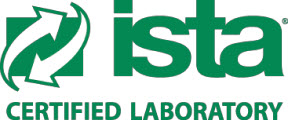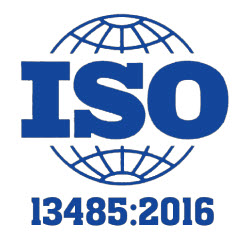Precision reagent packaging refers to the meticulous and accurate packaging of chemical reagents. It involves the careful measurement, containment, and labeling of reagents to meet specific quality standards and facilitate their safe and effective use in various applications.
The precision reagent packaging process ensures accuracy, purity, and stability:
Accurate measurement
Reagents must be carefully measured and dispensed in precise quantities to ensure the desired concentration.
Containment and preservation
Proper packaging helps protect reagents from external contaminants, moisture, and other factors that could degrade their quality. This is particularly important for sensitive reagents that may react with impurities or undergo degradation over time.
Identification and traceability
Clear and accurate labeling on reagent packaging is essential for proper identification. Researchers need to easily identify the reagent, its concentration, expiration date, and any other relevant information, all of which adds to traceability.
Safety Considerations
Precision reagent packaging also includes measures to enhance safety. This involves designing packaging that minimizes the risk of spills, leaks, or exposure to harmful substances.
Types of precision reagent packaging
Choosing precision reagent packaging depends on the nature of the reagent, specific requirements, and considerations such as shelf life, ease of use, and safety. It typically involves using materials that are inert and non-reactive, as well as using techniques that minimize the risk of contamination.
There are a number of different types of precision reagent packaging, including:
Bottles and Vials: These are the most traditional forms of reagent packaging. Glass or plastic bottles and vials come in various sizes, and they are often used for liquid reagents. Amber-colored options are used for light-sensitive substances to prevent degradation.
Blisters: Blisters are individually sealed units ideal for solid or semi-solid reagents. They protect against moisture and contamination, extend shelf life, and allow for precise dosage and easy access without compromising the remaining contents.
Ampoules: Ampoules are sealed vials that are typically made of glass. They are designed for single-use and provide excellent contamination protection. Ampoules are often used for sensitive or reactive reagents.
Cartridges: Cartridges are a type of precision reagent packaging that is designed to be used in automated instruments. They typically contain a single reagent or a set of reagents that are used together.
Pre-measured Pouches: Single-use pouches containing pre-measured amounts of reagents are convenient for specific applications, reducing the need for manual measurement and minimizing the risk of errors. These are particularly useful in fields where precision and consistency are critical.
Microtubes: These small, cylindrical containers are often made of plastic and are used for storing small volumes of liquid reagents. They are commonly employed in molecular biology and biochemistry experiments.
Lyophilized or powdered form: Some reagents are packaged in lyophilized (freeze-dried) or powdered form to enhance stability and shelf life. Researchers can reconstitute these reagents with a specified volume of solvent before use.
Dropper bottles: These bottles have a built-in dropper or dispenser, allowing for precise and controlled dispensing of liquid reagents. This type of packaging is particularly useful when small volumes are required.
Customized kits: Some manufacturers provide precision reagent packaging in the form of kits, where multiple reagents are packaged together. This streamlines the experimental process and ensures compatibility between components.
Although blister packs are the primary form of reagent packaging, the utilization of other packaging systems for specific reagents that require additional care, such as those that are light-sensitive or corrosive, is also common to ensure their integrity and effectiveness in various applications.
Minimizing Amplicons in Precision Reagent Packaging
Alongside the various types and benefits of precision reagent packaging, an essential aspect to highlight is the rigorous effort to minimize, or ideally eliminate, amplicons in liquid reagents. This focus is a testament to the commitment towards maintaining the highest levels of accuracy and reliability in scientific experimentation.
Amplicons and Their Impact: Amplicons, which are specific segments of amplified DNA, can significantly impact the integrity of scientific results if present in reagents. Their minimization is crucial in avoiding the risk of false positives, especially in sensitive DNA and RNA analyses.
DNA/RNA-Free Packaging Environments: To ensure the purity of reagents, the packaging process is meticulously controlled in environments that are devoid of DNA and RNA. This step is pivotal in safeguarding the reagents from any potential contamination.
Stringent Quality Controls: The packaging of precision reagents involves strict quality control measures. These measures are essential to ensure that the reagents are free from any DNA or RNA contaminants, thereby upholding the highest standards of scientific research.
Enhancing Reliability in Laboratory Workflows: The commitment to providing amplicon-free reagents significantly elevates the trustworthiness and efficiency of laboratory procedures. Researchers can rely on these reagents for accurate and uncontaminated inputs in their experiments.
The emphasizes of rigorous cleaning and decontamination to prevent amplicon contamination, should focus on frequent sterilization of work surfaces and specialized equipment. Teams need to meticulously addresses contamination risks, such as sample-to-sample transfer, ensuring the highest standards of cleanliness and purity. Through these comprehensive practices, they can maintain the integrity of our reagents, supporting the reliability and accuracy of scientific research.
Achieving precision reagent packaging needs
Precision reagent packaging is a meticulous process crucial for maintaining the accuracy, purity, and stability of chemical reagents. Careful measurement, containment, and labeling adhere to specific quality standards, promoting safe and effective usage in various applications. Combining efficient precision reagent packaging techniques and materials with the minimalization of amplicons allows contract packaging leaders to maintain quality and safety of chemical reagents for their clients.
Looking for more information on this topic? Read The Art and Science of Custom Microfluidic Blister and Cartridge Packaging Design.
Start up. Speed up. Scale up. Founded in 1997, Life Sciences Outsourcing is an FDA-registered and ISO 13485-certified organization with services and capabilities spanning the entire medical device product life-cycle – from turnkey manufacturing, testing, validation, and sterilization to precision packaging, fulfillment, and distribution. Email us at info@lso-inc.com or call (714) 672-1090 today to get started.







